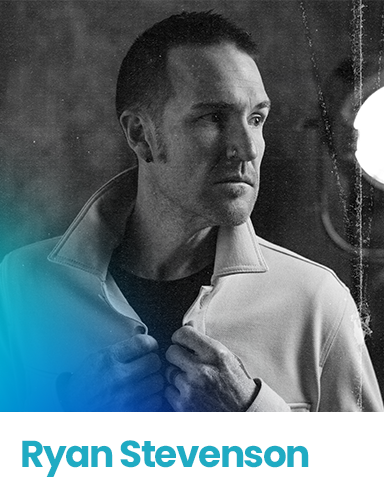
Those That Fail To Plan Have A Hard Time Winning
One of the most unfortunate things that has developed out of the last 30 years in the radio business is that strategic planning and strategy has largely fallen out of favor with local radio stations and local radio clusters.
You may not think you don’t have time for strategic planning, but making this a part of your local business can have a huge impact on your success. Today I thought I would take a moment and lay out what can go into a strategic planning session where you work. Going through this process can bring teams together, focus vision and purpose and give your team a secret weapon for progress that can electrify your results over the next 12 months. This starts at the top. So, if you are the market manager, this is for you. People will focus on what the leadership wants and you get what you reward.
Before you begin this process, you must commit to having an open mind and communicating to your team that you are inviting them to a top level strategic meeting where the goal is to work together to find weaknesses, identify opportunities and pull together to strengthen the core of your business. It is essential that your individual team members feel it is safe to share and that their opinions. Inviting everyone together also says something else. “You are important.” This empowers your team and they feel they are part of something bigger than themselves. Keep this in mind: Without creating the proper open, respectful and safe environment, you will not get the desired result.
Start With Your Goals For The Next 12 Months
What do you want the next 12 months to look like for your brand or brands?
What do you want your on-air, listener facing, client facing and internal culture to be and what goals would you like to reach in the next 12 months?
Where do you want your business to be at the end of the 12 months?
Then ask yourself what your vision is for your business in the next 3 to 5 years and ask your team to participate in the creation of that vision.
You should have a clear vision for the future and what you want before you begin your strategic planning session, but you should be open to team contributions.
Draw Your Leadership Team Together For Prep
An invitation to this event means that you are a valued leader in this organization and you should make that clear up-front. Time to get your essential leadership team together and ask them to do some foot work to bring with them to the actual session. After all, you want everyone participating in your strategic planning event prepared to participate and contribute.
Ask them individually – without communicating with each other on their own answers – to write out:
- What went well for their department over the past 12 months?
- What went wrong in their department over the past 12 months?
- What did you learn from what has happened over the past 12 months?
- What are our greatest opportunities for your department in next year?
- What are the biggest challenges we will face this year?
- What challenge do you see coming around the corner that we should prepare for?
- Which competitors should we keep an eye on?
- Rate your direct reports on a scale of 1-10. Who can improve? Whom should be replaced? This might seem uncomfortable, but it is essential for making sure you have the right people on the bus.
- If we could only reach one goal next year in your department, what should it be?
Ask your team (for their individual departments) to do the following exercise about the current state of their departments as they see it:
Individual Department SWOT analysis
Ask each team member to do a SWOT analysis of their department.
SWOT analysis is a strategic planning technique used to help a person or organization identify strengths, weaknesses, opportunities, and threats related to your competition.
SWOT assumes that strengths and weaknesses are frequently internal, while opportunities and threats are more commonly external. The name is an acronym for the four parameters the technique examines:
Strengths: characteristics of the business or project that give it an advantage over others.
Weaknesses: characteristics that place the business or project at a disadvantage
Opportunities: elements in the environment that the business or project could exploit to its advantage.
Threats: elements in the environment that could cause trouble for the business or project.
As you can tell, some of the things you will ask people in leadership roles to do are tough because people are involved and so is accountability. Make sure you make it clear you are not looking to fire people or uncover wrongdoing. This is an exercise in strength and weakness and knowing where you are today.
Meet With Team Members Individually Before The Session
Meet with your individual team members to discuss their SWOT and their views on their individual department. If they present too rosy a picture, send them back to the drawing board and make it clear that your yearly strategic planning session is meant to give an unvarnished look at what has taken place and a fruitful look into the future and you need their full and honest participation. This meeting is your opportunity to discuss with the critical individual leaders important issues from the past year and their hopes for the future of their department. The end result should provide a strong understanding between leadership players of individual departments going into the planning session.
The Strategic Planning Session
At the beginning of the actual meeting, celebrate the high points that have taken place in the last year.
Express confidence in your team and make it personal. You want your team members to know they are individually valuable to the process.
Consider Hiring A Guide
Conducting a strategic planning event is absolutely hard work. However, it’s more than that. If you or someone inside the radio business or cluster is leading the meeting, the entire meeting can seem less objective. If the market manager guides the meeting, you could end up with a super group of boss pleasers. This will certainly limit a feeling ‘we are all in this together’ and will encourage a more shallow result.
Take Minutes Of The Planning Session
Have someone there to take minutes so you have a record of everything that is not memory-based.
Time For That SWOT For Your Overall Business
Everyone has done this for their department. Now it is time for the overall view. Encourage participation from all members of your team. Doing this exercise is critical and taking a serious wide-eyed look at the business and then charting your path for the coming year. This isn’t personal. So, you won’t participate in judging weakness in people. Your focus will be on the business in this open setting.
Begin identifying the important accomplishments your team will want to achieve over the next 12 months and lay them out as a team. Encourage discussion. Encourage different points of view but be careful to identify a point in time where a direction will be selected and vision created for the future.
Develop An Action Plan With Details
In the end, the essential elements of any strategic plan include:
Clear mission and vision statements to frame the context of the plan
Clear timelines for strategy implementation and progress monitoring
Quarterly benchmarks or objectives that will inform progress towards annual goals
Identification of the data sources used to track progress
Indication of the individuals and/or offices responsible for each strategy
Get Buy In From Your Team
One of the great things about doing this with your leadership team and creating a plan together is that it is much easier to get the ‘buy in,’ which is essential for having an effective planning session.
Celebrate The Plan
Have a celebration (this can be a dinner or some other event with your leadership team). As a part of this celebration, have a printed version of the full plan for each individual to sign. This is ownership.
Once you have a strong strategic plan that your team has developed and signed off on, you have a roadmap for the year to come and this can be priceless in jump-starting your year and keeping you on track to reach even higher goals than your team thought possible.
Loyd Ford is president and chief strategic officer at Rainmaker Pathway Consulting Works (RPC). They help local radio with ratings and revenue. Reach him anytime at 864.448.4169 or Ford@RainmakerPathway.com.






















































































































